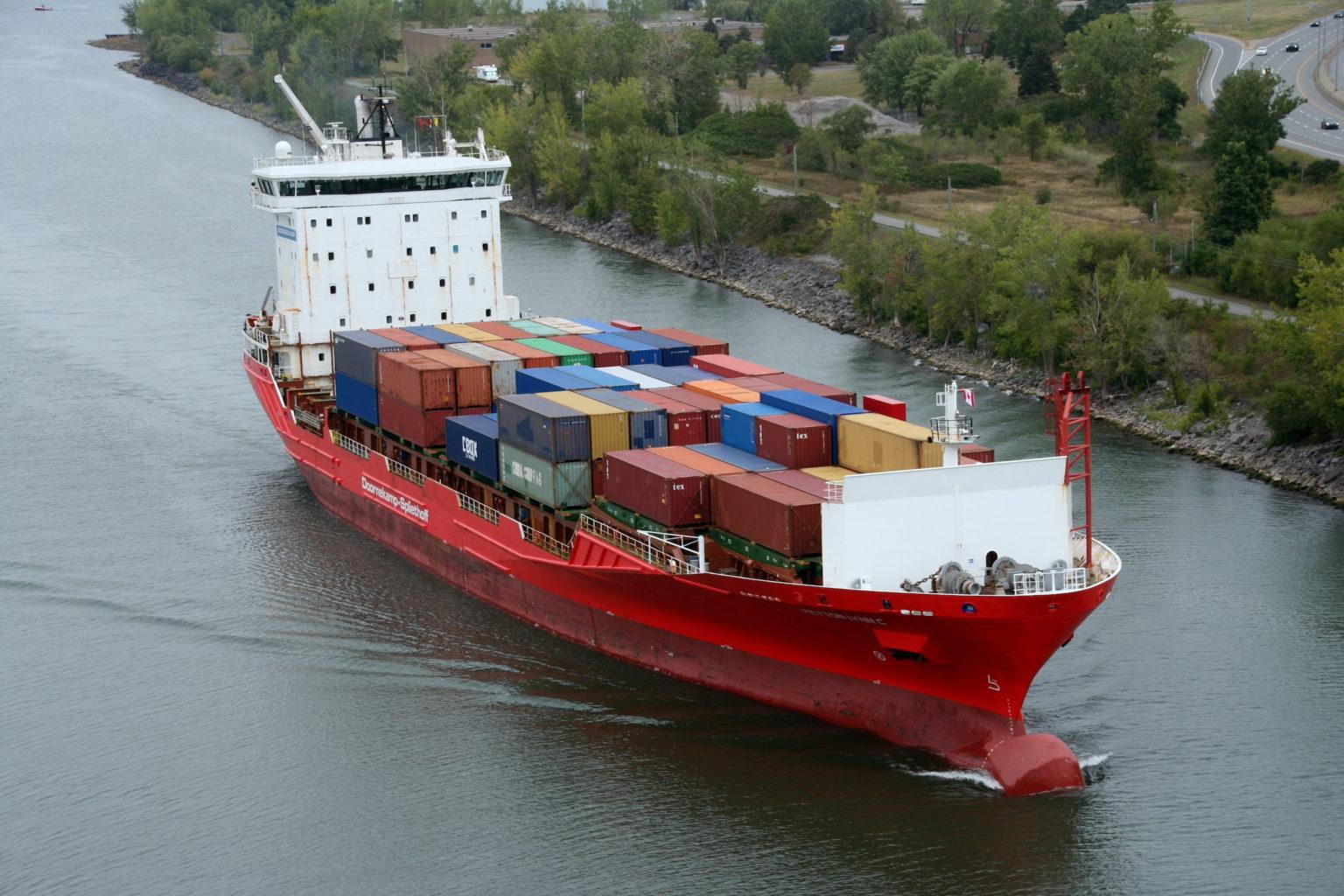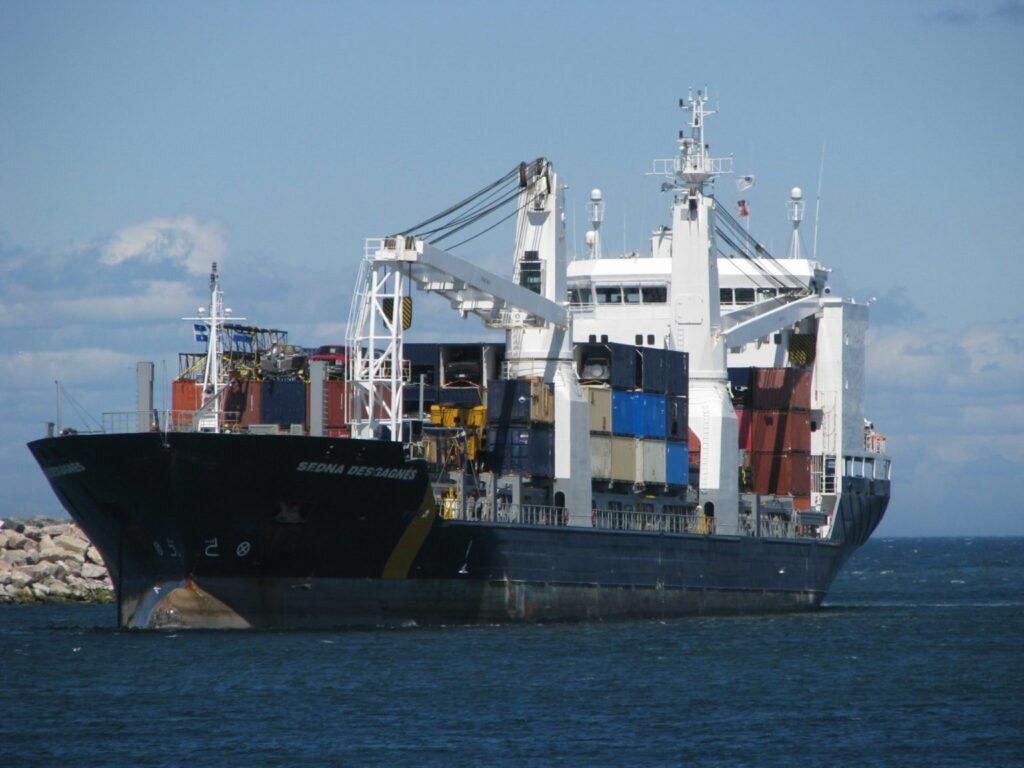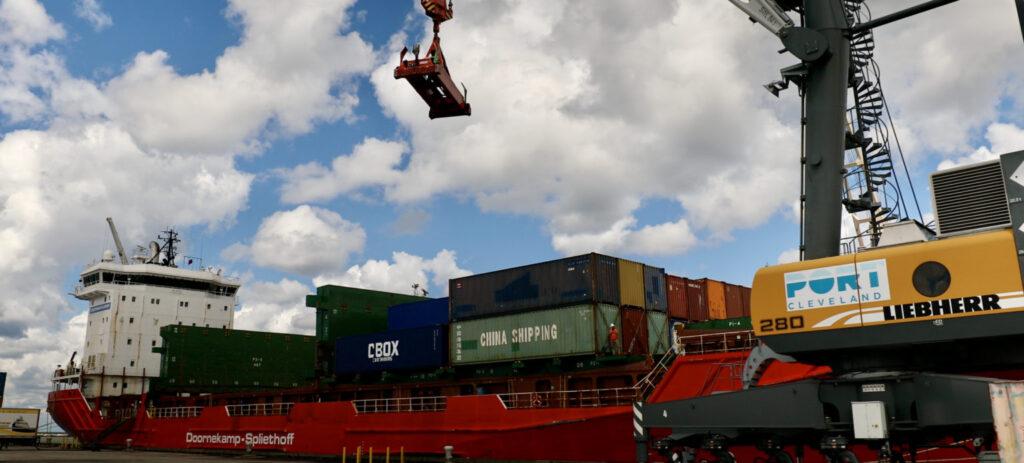
“The Great Lakes-St. Lawrence Seaway System represents a pressure relief valve for North American freight movement that should transcend this pandemic bubble.”
For the first time in many years, new container services into the Great Lakes were expanded and piloted in 2021, with more plans underway for this coming year.
Maritime industry executives, including representatives from the ports of Cleveland, Duluth and Hamilton and a major European niche carrier, say the renewed interest has been driven in part by COVID 19-related and other supply chain disruptions in the past few years in Canada and the United States that have seen ocean vessels stacked up and congesting both east and west coast ports.
“The Great Lakes-St. Lawrence Seaway System represents a pressure relief valve for North American freight movement that should transcend this pandemic bubble,” asserts Deb Deluca, port director at the Duluth Seaway Port Authority, ”It’s a great alternative for shippers looking to reach the Upper Midwest directly.”
Ian Hamilton, president and CEO of the Hamilton Oshawa Port Authority (HOPA), adds that a changing landscape of highway congestion, driver shortages, and escalating fuel costs are all increasing supply chain costs — which opens up new opportunities to provide shortsea shipping alternatives.
Spliethoff Launches Dedicated Container-Only Great Lakes Service
Thanks to a growing partnership with Amsterdam-based Spliethoff, which launched the Cleveland-Europe Express (CEE) service in 2014, the Port of Cleveland doubled its container volume in 2021. The long-term goal is to handle between 50,000 and 75,000 containers annually, says Dave Gutheil, chief commercial officer for the Port of Cleveland, versus current throughput of about 15,000 TEUs.
The CEE, which transports a combination of bulk, breakbulk, project cargo and containers, started with one multi- purpose vessel moving between Cleveland and Antwerp.
The liner service now utilizes multiple vessels, and last September, Spliethoff (which marked its 100th anniversary in 2021) added a container-only vessel, the Peyton Lynn C. Chartered from Doornekamp Shipping Services of Odessa, ON, it has the capacity to handle over 600 TEUs.
“Due to the various issues throughout the global supply chain,” Gutheil explains, “cargo owners and logistics providers continue to search for alternatives to their traditional routings. Because of these challenges, the Port expects that our container volumes will continue to grow, and we will continue to make the necessary investments that will entice more cargo to our port.”
Sten Konst, head of Spliethoff’s Great Lakes department, oversees the bi- weekly CEE sailings to Cleveland, Valleyfield, Quebec and various ports of the Great Lakes. With the addition of the Peyton Lynn C., he says “we are proud to be the first and only dedicated container service to the Great Lakes.”
The vessel, he continues, further improves capacity, transit times and frequency.
Commenting on the present outlook, Konst emphasizes: “Especially now with all the logistical challenges in the current pandemic, supply chain reliability is more important than ever. Shippers are discovering the advantages of a direct service into the economic heartland of America, circumventing the congestion of the US east coast.”
“Although some of the current supply chain problems may be temporary,” he adds, “we believe that the current situation will have a lasting effect on the Great Lakes, as some shippers that may have been hesitant to make use of the Seaway system in the past are now making the shift and are experiencing the advantages of our service.”
For his part, HOPA’s Ian Hamilton is playing a leadership role in proposing to shippers an alternative route to markets through shortsea shipping solutions that convert more cargo – including containerized cargo – to the marine mode.

“Real opportunities to build and strengthen the sector”
Hamilton sees “real opportunities to build and strengthen the sector.”
Highway congestion, driver shortages, and escalating fuel costs are all increasing supply chain costs.
“The landscape is changing, and there are some great new short sea shipping pilots happening in Hamilton and elsewhere,” Hamilton says, adding: “There is an appetite to consider new solutions and demand in the market for more sustainable, efficient and competitive options for container movements.”
Last June, a partnership between HOPA, Hamilton Container Terminal (HCT), Groupe Desgagnés, Federal Marine Terminals, The St. Lawrence Seaway Management Corporation, MSC and the Port of Montreal completed a pilot shipment for a fledgling container service. The MV Sedna Desgagnés carried 282 containers from Hamilton to Montreal with mostly scrap steel on the first voyage of a planned feeder service for transloading to overseas vessels. “We’re hoping to do two additional pilots this year, and then roll out a fulltime service in 2023,” says Hamilton. The original plan is to build things up to 20-plus sailings annually.
While the container shipping operation demonstrated its potential, the Canadian port chief executive acknowledges it also revealed “the challenges we’re faced with for this type of service. Our focus was a direct line from Hamilton to Montreal, but there are other alternatives available. Cooperation between ports can work well.”
“Also, in Canada, better data transparency and understanding what commodities are moving from where to where are critical in understanding how to develop new products/services to meet demand,” Hamilton stresses.
Amandeep Kaloti, president of HCT, notes: “A Great Lakes container service has been a goal for our organization since we set up shop in Hamilton five years ago. We have been creating the business ecosystem to bring this service to life, and established the right partnerships for it to succeed.”
HCT’s facility is notably attracting business through its Flexi-bag lined containers capable of transporting Ontario wines, petroleum by-products and other types of liquid cargo.

Photo courtesy of Port of Cleveland.
Containers Reaching U.S Midwest by Water
Meanwhile, things have been hopping at the Port of Duluth-Superior following a milestone decision last October – the regulatory approval awarded to Duluth Cargo Connect to accept at Clure Public Marine Terminal international shipping containers transported by waterborne vessel. Created in 2017, Duluth Cargo Connect was previously just a land-based road and rail container operation.
“Our new Sea Cargo Facility status opens the door for greater container volume and cargo diversity, which will complement our existing land- based container operation,” says Jonathan Lamb president of Duluth Cargo Connect. He says that the direct maritime connection over the docks “will give our customers even more opportunity and flexibility in their supply chains.”
Other ports on the Great Lakes have been reported to be evaluating the feasibility of investing in the handling of containers to complement core bulk cargo business. They include Toledo which has three mobile harbour cranes.
However Joe Cappel, vice-president of business development at the Toledo- Lucas Port Authority, cautions: “We have equipment and capacity to handle containers but this is not presently being pursued aggressively in light of our already substantial bulk and breakbulk product mix and focus of our infrastructure investments.”